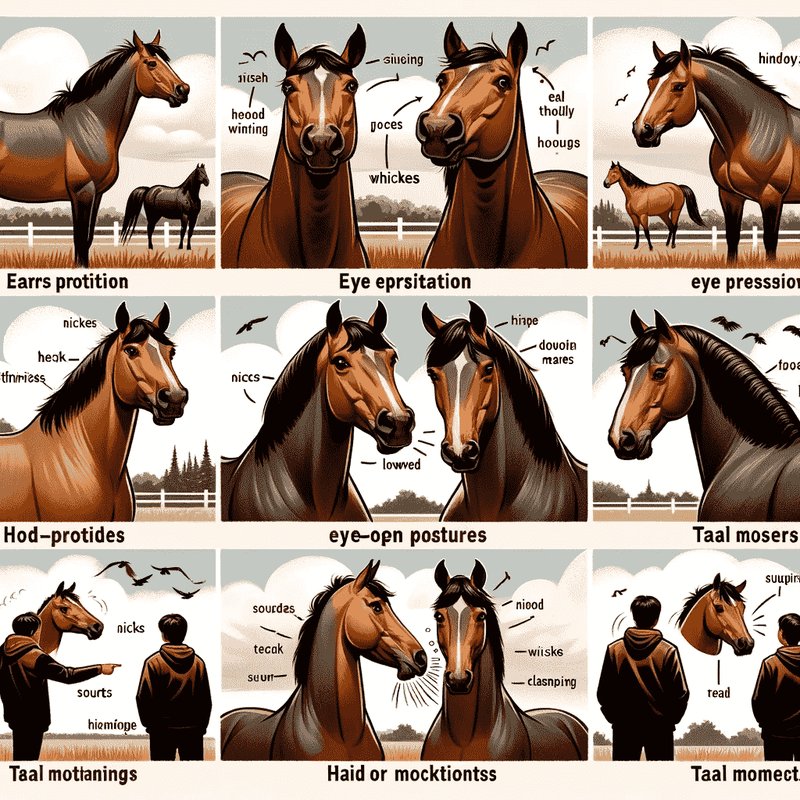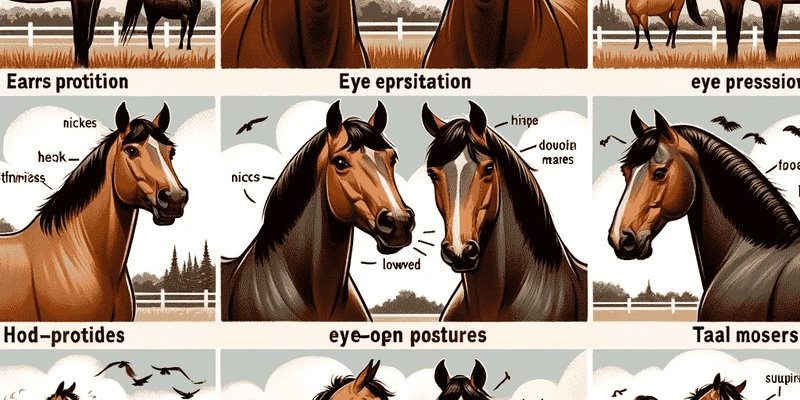
Imagine walking into a crowded room where everyone is speaking different languages. If you don’t understand their gestures or tones, it’s easy to feel lost. Horses are the same way! They rely on body language to express their thoughts and feelings. This connection can foster better relationships and improve training. So, grab your cup of coffee, and let’s dive into how you can decode these magnificent creatures!
The Basics of Horse Communication
To truly grasp horse behavior, you first need to understand that they are prey animals. Unlike us, who often prioritize direct confrontation, horses have evolved to read their surroundings carefully. They rely heavily on body language to signal their feelings and intentions, offering you a glimpse into their world.
When you’re near a horse, observe their ears; they’re like radar dishes, picking up sounds from all directions. If a horse’s ears are perked forward, it’s usually engaged and interested in something. On the flip side, if the ears are pinned back, it might mean they’re annoyed or feeling threatened. This is vital information! By learning to read these signals, you can better understand when a horse is relaxed or uneasy.
Another behavior to note is their tail. A calm, relaxed horse will have a tail that hangs down or occasionally swishes gently. Meanwhile, a horse that feels threatened or agitated might swish its tail rapidly, signaling their discomfort. So, watching these simple movements can help you gauge their mood and adjust your own behavior accordingly.
Understanding Common Horse Behaviors
Horses express themselves in various ways, from playful antics to signs of stress. Understanding these behaviors can help you create a safer, more comfortable environment for them. Here are a few common behaviors to look out for:
- Whinnying or Neighing: Horses often vocalize to communicate with each other and their humans. A whinny can indicate excitement or a desire for attention.
- Pawing: If you notice a horse pawing at the ground, it often signals boredom or impatience. It’s their way of saying they want to engage in something more interesting.
- Chewing or Nibbling: Horses will sometimes nibble on objects when they’re feeling relaxed and curious. This behavior is often seen when they’re introduced to new environments or objects.
Interpreting these behaviors can be a game changer. For instance, if your horse is whinnying, it might be calling out to a friend or letting you know they’re ready to train or play.
Body Language Nuances: The Ears, Eyes, and Nose
Let’s take a closer look at the horse’s body language. Each part of their body communicates something different, and understanding these nuances can significantly improve your interactions.
Ears are the most expressive part of a horse. When they swivel, it’s like they’re tuning into different conversations happening around them. If you see one ear pointing at you while the other is turned away, it might indicate that the horse is half-interested in you but also focused elsewhere.
Eyes also play a crucial role. Horses have large eyes with excellent peripheral vision. A horse that shows wide eyes with a dilated pupil might be feeling frightened or startled. In contrast, a soft, relaxed gaze can indicate comfort and trust.
Lastly, don’t underestimate the nose! A horse’s nose can exhibit a range of emotions—from flaring nostrils when they sense danger to softly inhaling when they’re relaxed and content. Recognizing these subtle signs gives insight into their emotional state.
Recognizing Signs of Stress and Fear
Just like humans, horses experience stress and fear, which can be expressed through their body language. Understanding these signals is essential for keeping both you and your horse safe.
A horse that suddenly raises its head, flares its nostrils, or shows rapid breathing might be reacting to something scary. In these situations, it’s vital to remain calm and provide reassurance. You might want to speak softly or even step back to give the horse some space until it relaxes.
Some other signs to watch for include:
- Bolting: If a horse suddenly takes off running, it’s likely responding to a perceived threat.
- Pawing: As mentioned earlier, this behavior can indicate impatience or anxiety.
- Withdrawal: If a horse suddenly becomes less interactive, turning away from you or isolating itself in a corner, it might be feeling overwhelmed.
Recognizing these signs can help you intervene before a situation escalates.
Building Trust Through Positive Interaction
To foster a positive relationship with your horse, consider implementing gentle training techniques that prioritize trust. Horses thrive in environments where they feel safe and understood.
One effective approach is positive reinforcement. This means rewarding your horse with treats, praise, or affection when they display desired behavior. For example, if your horse responds well when you ask it to move forward, give it a treat or a scratch behind the ears. This encourages them to repeat the behavior in the future.
Another useful tip is to spend time simply being near your horse without any training agenda. This can create a bond of trust and help your horse feel more comfortable in your presence. Think of it as a way of saying, “I’m here for you, buddy,” without any pressure.
Understanding horse behavior and body language opens up a world of connection between you and these magnificent animals. By paying close attention to their ears, eyes, and posture, you can start to interpret their feelings more accurately.
Remember, every horse is unique, and patience is key in learning their language. With time, practice, and a bit of empathy, you can not only understand what your horse is saying but also deepen your bond with them. So, the next time you’re around horses, take a moment to observe. You might find yourself immersed in a conversation you never knew existed!

